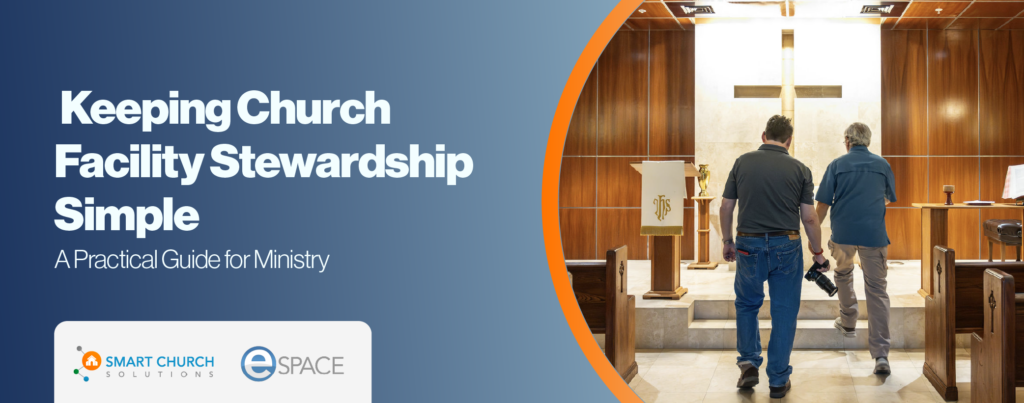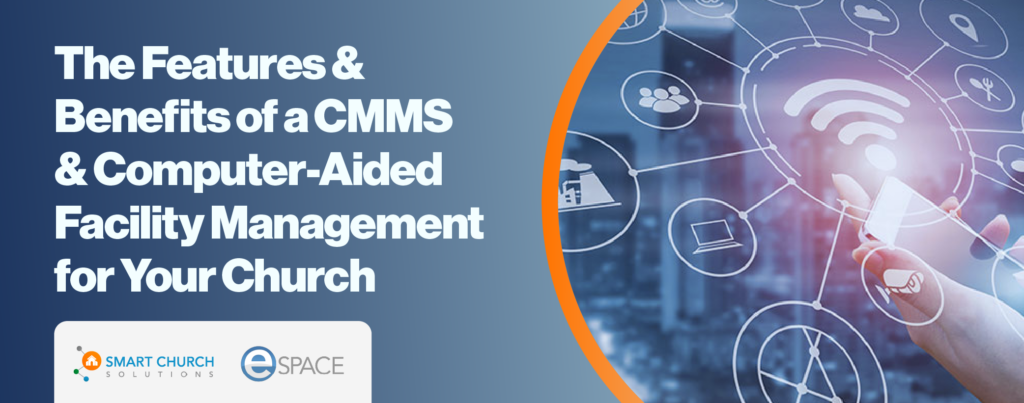INEVITABLE: certain to happen; unavoidable.
Capital reserve planning is not an “if” matter. It is a “when” and “how much” retirement planning. It is planning for the inevitable.
We all know we need to plan for retirement. We set up retirement accounts, take advantage of tax-free plans, and determine how much we’ll need to comfortably live once we retire. (Well, that’s what we’re supposed to do anyway.) Have you ever considered that each aspect of your church facility will — at some point — need to retire?
That HVAC system you’ve had for 10 years will retire itself soon. It’s the same with flooring, light fixtures, windows, the pavement, and more. To be ready for the retirement of these items, you’ll need a fully funded capital reserve account.
An Introduction Into Capital Reserve Planning
Capital reserve planning is one of the most overlooked aspects of facility ownership. Most organizations have no trouble raising or borrowing funds to build their facilities and budget daily operational expenses. But many (most) forget that their buildings have systems and materials that are all deteriorating. As such, nearly every facility component will have to be replaced at some point. Not to mention the rate of deterioration will vary based on many variables.
Over the last 34 years, a significant portion of our work has involved collaborating with institutional organizations, including houses of worship, churches, schools, and colleges. A notable number of these have been not-for-profit entities. Regrettably, these organizations often fall short in long-term capital repair and reserve planning. However, this issue isn’t unique to them; many other market sectors face similar challenges in this area.
Capital Reserve Fund Defined
So, what’s next? What is a capital reserve account? Is it different from a sinking fund? Or a contingency fund? Excess annual budget?
Capital Reserve is a type of account of an organization reserved for long-term capital investment projects or any other large and anticipated expense(s) that will be incurred in the future. This type of reserve fund is set aside to ensure that the organization has adequate funding to at least partially finance the project.
The Cambridge Business English Dictionary defines a Capital Reserve as “an amount of money that a company or organization keeps in a special account for future needs.”
Did you catch the three keywords in that definition? Let me break it down for you:
- Money: This is cash, not the promise of it. We are talking cold, hard cash.
- Special Account: The account is not a slush fund and not an excess balance in the budget. It is a fund set aside for a purpose.
- Future: This money is not for the immediate. It is for the future.
In short, a capital reserve account is set up to pay for major capital expenditure (replacement, repurposing, etc.) when its effective life is over. If you spend $100,000 on a new HVAC system today, how much should you set aside in a reserve account for 15 years?
The Importance of Capital Reserve Planning
Besides being good stewards of what God has entrusted us with, there are several reasons this type of planning is essential.
Fact #1: All Buildings Deteriorate
This is a fact of nature, biology, chemistry, and physics. Every component of your facility is deteriorating. According to a study by the International Facility Managers Association, the natural rate of deterioration is 1-4% annually of the current replacement value.
Fact #2: Deferred maintenance accelerates the deterioration
Left unaddressed, the rate of deterioration will accelerate. It can even become exponential in growth. For example, if you do not re-caulk your windows as recommended by the caulk manufacturer, this allows gaps and cracks to grow and expand. Water that should be diverted by the caulk will migrate into these crevices and find its way inside your wall. That water will rot the surrounding wood, grow mold, and damage insulation. The lack of attention given to relatively minor maintenance can be the root cause of a significant issue.
Fact #3: The cost of operations far exceeds the cost of acquisition and construction
Over a 40-year life cycle, 71-85% of total facility ownership cost will be attributed to operational costs. Compare that to the initial costs of sticks and bricks being 15-20% of the cost during that 40-year duration. That is a pretty large disparity.
State Farm Insurance found that they spend about 80% of the total cost of ownership of commercial buildings on operational costs over 40 years. Further, a book published in 1969 by The American Institute of Architects, Life Cycle Cost Analysis 2: Using It In Practice, by David S. Haviland states:
“The initial design and construction of a facility comprises about 15% of the total cost of a building over its 40-year lifespan. The remaining 85% is made up of the building’s operations and maintenance costs.”
So, What Costs More: The Initial Cost Or The Cost After You Occupy?
The numbers speak for themselves. Do we invest the same amount of time and energy in planning our operational costs as we did when we developed our master plans and floor plans? Why do we get frustrated about an architect charging 8% instead of 5% or the construction partner charging 10% instead of 6%? The fees that encompass only 3% of the total cost of ownership feel so important when we pay them. However, the decisions this team suggests and implements will be with you for the life of your buildings. Do we have our eyes on the real cost of facility ownership?
To answer those questions, we must take these intentional steps:
- Address Deferred Maintenance: If you have any deferred maintenance, you must develop a plan to bring things up to “snuff” based on their age and expected life. You will always be playing catch up if that is not done before setting the ongoing Capital Reserves.
- Research Current Replacement Value: What would it cost to replace the item today?
- Estimate the Expected Life: How many years of life is still expected from this item?
- Determine Annual Inflation: As you look at the economic environment, what percentage of annual inflation would be prudent to plan on?
- Develop an Annual Budget: Based on the above, how much money should you set aside annually?
You can project the total replacement cost and the annual amount needed by addressing these five simple items. You are smart enough to know that this simplistic approach is not 100% foolproof. But it will get you close.
There will be times when the inflation percentage will be off, or the years of life could be misjudged. Regardless, you will have set aside money to help you cover the cost instead of having to do a capital campaign just to replace the carpet or buy new HVAC units.
So, How Do You Get Started with Capital Reserve Planning?
Start by prioritizing which items you’ll eventually need to replace based on the following categories:
Category #1: Largest Line Items
- HVAC
- Roofing
- Asphalt
Category #2: Operational Impact
- HVAC (see a pattern)
- Building Envelope (Windows, Caulk, Doors, Insulation, Air/Water Intrusion)
- Lighting/Electrical
Category #3: Visual Impact
- Parking and site concrete
- Floor finishes
- Wall Finishes
- Lighting
From there, look at our Life Cycle Calculator and eSPACE as part of your Facility Condition Assessment. This tool is an inexpensive way to:
- Track all physical assets
- Set current replacement values
- Project inflation impacts
- Set budget amounts on an annual basis for all items and assets
- See a dashboard of dollars needed each year
- Set reminders and alerts for key milestone dates related to the replacement of these items
- Interface with the eSPACE Work Order Management to further increase efficiency and effectiveness.
Your investment in a capital reserves account will make it easier to replace vital components of your church facility. When your parking lot must be repaved or the HVAC dies (not if, when), you’ll have the money readily available to handle those purchases. That’s good stewardship of church finances and facilities.








